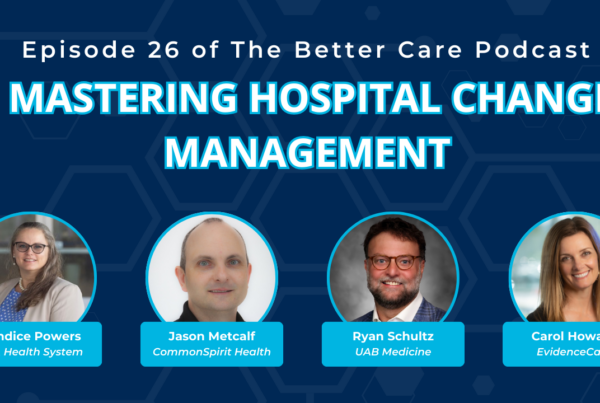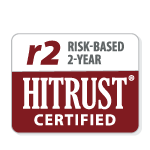What Hospital UR & Revenue Cycle Teams Need to Know
A Brief History of Precertification
Prior authorization (PA), originally known as precertification, began in the 1960s and expanded significantly during the rise of managed care in the 1990s. Its intended goals were to:
-
-
Contain healthcare costs
-
Limit unnecessary utilization
-
Ensure appropriate use of high-cost services
-
Despite these aims, PA has become an increasingly complex, fragmented, and burdensome process. Today, it is a leading driver of care delays, administrative waste, and provider burnout—with surveys indicating over 90% of physicians reporting delays in patient care due to PA requirements.
Some of the services affected are:
-
- Advanced imaging (MRI, CT, PET)
- Elective surgeries
- Behavioral health (IOP, residential)
- Specialty biologics and infusions
- Cardiac diagnostics/tests
- DME (wheelchairs, CPAP machines)
- Inpatient admits from ED require concurrent authorization
What’s changing?
In a recent development, HHS Secretary Robert F. Kennedy, Jr. and CMS Administrator Dr. Mehmet Oz brought together senior insurance executives for a national roundtable addressing long-known problems with the PA process and will attempt to streamline and improve the prior authorization processes for Medicare Advantage, Medicaid Managed Care, ACA Marketplace, and commercial payers—representing nearly 80% of the insured population.
As a result, major insurers—including UnitedHealthcare, Aetna, Humana, Elevance, Kaiser, and Cigna—signed a mutual commitment to overhaul PA by 2027.
Their shared goals include:
-
- Standardizing electronic authorization: Fully integrating PA submission into EHRs.
- Reducing the volume of services requiring PA: Focused on services frequently approved or low-risk.
- Honoring existing approvals during insurance transitions: Reducing patient disruption.
- Improving communication and transparency: Including appeals, approval times, and decision rationale.
- Expanding use of real-time authorizations: Most PAs should be automated by 2027.
- Ensuring all clinical denials are reviewed by qualified clinicians.
These commitments will require hospitals and care providers to adapt workflows, adopt emerging technologies, and develop closer payer collaboration. See the table below for Current vs. Future State.
Prior Authorization Reform: Current vs. Future State
| Category | Current State (2024) | Future Vision (By 2026–2027) | Target Date |
| Electronic Submission | Inconsistent: Fax, phone, or portal | Standardized EHR integration via X12 278 and FHIR | Jan 2026 |
| Real-Time Approvals | Rare, manual process | Widespread use of real-time or near-real-time responses | Jan 2027 |
| Services Requiring PA | Broad, inconsistent, high volume | Significant service reduction based on approval data | Jan 2026 |
| Requirements Transparency | Limited and unclear | Publicized policies, rates, and decisions | Beginning 2025 |
| Continuity During Insurance Change | PA lost mid-treatment | Existing PAs honored during transitions | Jan 2026 |
| Clinical Denial Reviews | May lack specialty expertise | Must be reviewed by trained, licensed providers | Immediate–2026 |
| EHR Interoperability | Partial/fragmented | Fully interoperable PA workflow from EHR to payers | 2026–2027 |
| CMS PA Exemption (WISER) | Not active yet | Services exempt from PA with CMS justification | Launching 2025 |
Introducing CMS’s WISeR Pilot: A Critical Twist
As the industry moves to reduce burdensome PA, CMS is simultaneously launching a stricter pilot program requiring new PA for traditional Medicare beneficiaries through the Wasteful and Inappropriate Services Reduction (WISeR) model (full PDF overview linked here). This dual-track reform means hospital UR and revenue cycle teams must prepare for both simplification and selective expansion of PA enforcement.
Key WISeR Highlights:
-
- Launch Date: January 1, 2026 – December 31, 2031
- Pilot States: New Jersey, Ohio, Oklahoma, Texas, Arizona, Washington
- Goal: To apply commercial payer prior authorization processes that may be faster and easier. De-incentivize and reduce the use of medically unnecessary care by cubing overuse of 17 high-cost, low-value services through proactive review
- Method:
- Providers can choose pre-service PA or post-service pre-payment review. There will be “Model Participants” who are companies with expertise in managing the prior authorization process for other payers and who have clinicians who can review requests. You can submit directly to the Model Participant or you can submit the request to the MAC who will forward to the Model Participant. If you don’t use prior authorization, then your claim is subject to medical review by the Model Participant.
- Decisions will be powered by AI, but confirmed by licensed clinicians. The Model Participant will be rewarded based on a reduction of medically unnecessary or non-covered services. (There is an incentive to ensure documentation supports services).
- Providers with strong compliance may earn exemption (i.e., “gold carding”). A provider/supplier would be exempt from prior authorization if they achieve a prior authorization provisional affirmation threshold of 90 percent during a periodic assessment
Targeted Procedures in WISeR
These 17 services were chosen due to patterns of overuse or questionable necessity in claims data:
-
- Electrical nerve stimulators
- Sacral nerve stimulation
- Phrenic nerve stimulator
- Deep brain stimulation
- Vagus nerve stimulation
- Induced lesions of nerve tracts
- Hypoglossal nerve stimulation for obstructive sleep apnea
- Epidural steroid injections for pain management
- Percutaneous vertebral augmentation
- Cervical spine fusion
- Arthroscopic lavage for knee OA
- Incontinence control devices
- Diagnosis/treatment for impotence
- Percutaneous lumbar decompression
- Skin/tissue substitutes
- Bioengineered skin for wounds
- CTPs for lower-extremity wounds
See page 19 in the pdf linked above for a list of LCD/NCD’s.
Could This Go National?
Yes. CMS intends to evaluate the WISeR model’s impact on cost savings, care quality, and utilization. If successful, nationwide expansion is likely, potentially reintroducing PA in traditional Medicare on a broader scale.
What UR & Revenue Cycle Teams Can Do Now
As the landscape evolves in two directions—simplified general PA and more stringent pilot models like WISeR—UR and revenue cycle teams must proactively position themselves for success.
Immediate Action Steps
-
- Audit Current PA Volumes
-
-
- Identify top PA procedures and departments impacted.
- Prioritize services likely affected by WISER (especially in pilot states).
-
-
- Analyze Denial Trends
-
-
- Use analytics to flag payers, departments, and procedures driving the highest denial rates.
- Work with payers to ensure you have the correct understanding of their rules and LCD/NCD coverage requirements.
-
-
- Strengthen Documentation Education
-
-
- Train physicians and clinical staff on best practices for documenting medical necessity. Ensure they are aware of payer regulations and LCD/NCD requirements.
- Prepare ahead for WISeR-targeted services to mitigate future denials.
-
-
- Explore PA Automation Tools
-
-
- Align IT and EHR teams now to support future CMS and payer expectations for:
- Real-time decision support
- Integrated submission
- Transparency into PA requirements
- Align IT and EHR teams now to support future CMS and payer expectations for:
-
-
- Monitor CMS and State Policy Updates
-
-
- Designate team members to monitor CMS briefings about WISER and gold-card definitions.
- Start mapping workflows for dual path PA models (e.g., elective submission vs. post-service review).
-
-
- Prepare for Gold-Carding Opportunities
-
-
- Track current PA performance accuracy (target ≥90%).
- Build internal reporting to demonstrate readiness for exemption programs under WISeR.
-
Conclusion
Prior authorization is entering a new era—one defined by both modernization and tighter scrutiny. For most patients and providers, the shift toward electronic, automated, and streamlined PA processes is a welcome relief. But for select services and populations, particularly under Medicare, utilization oversight is increasing.
By acting now, hospital utilization review and revenue cycle leaders can ensure readiness, reduce denials, protect revenue, and safeguard patient access to timely care.










